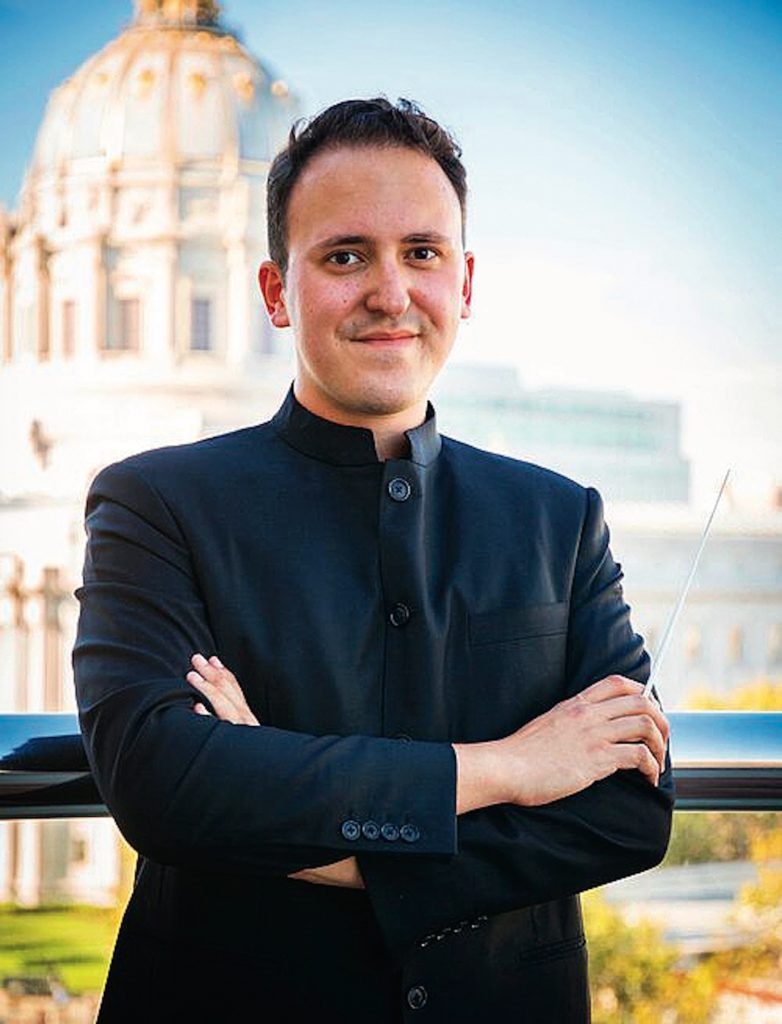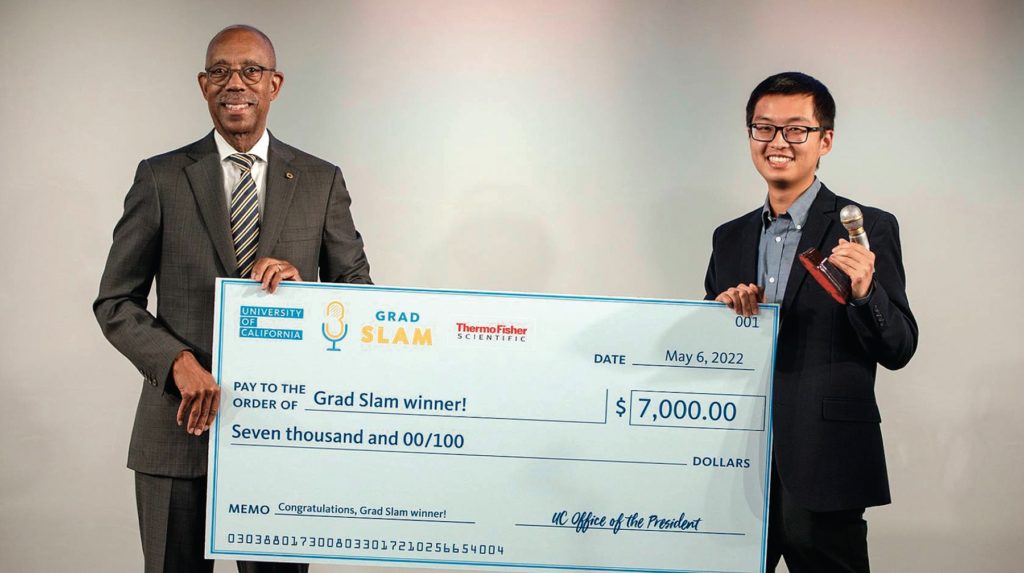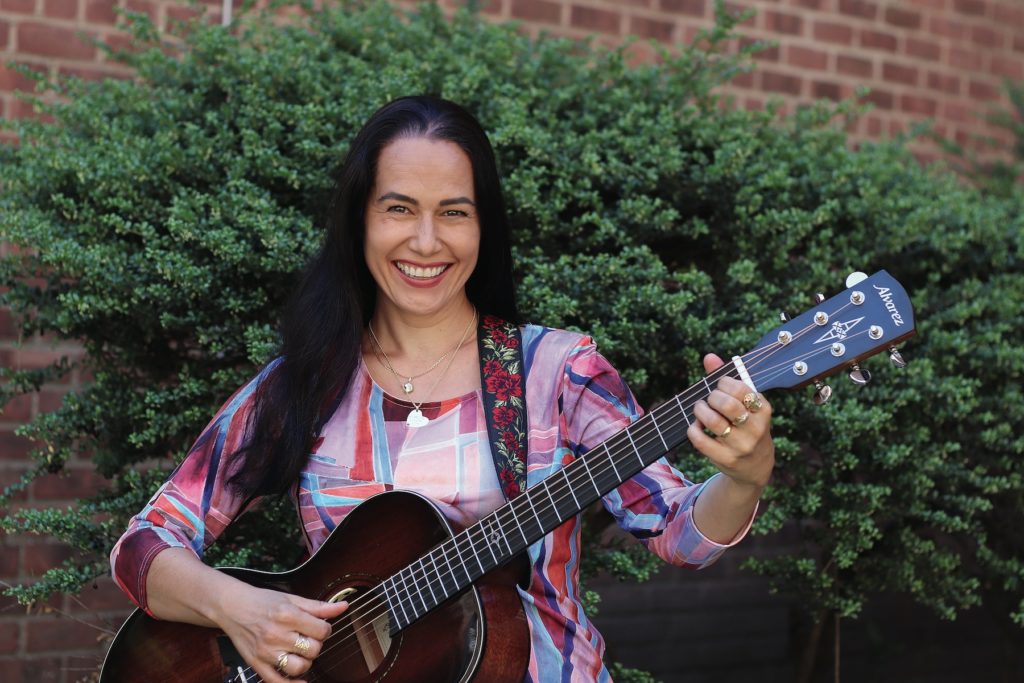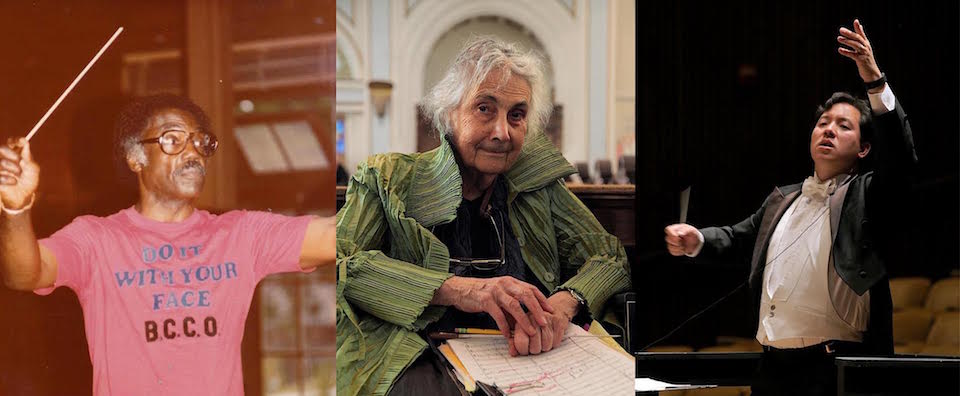
Although he’s still in his twenties, Stefano Flavoni ’15 is already making his mark on the classical music scene. He was music director of Pre-College Opera and Musical Theatre for the San Francisco Conservatory of Music, and is now the music director with the San Francisco Arts Education Project. He is also assistant conductor and cover conductor of the Lakes Area Music Festival and the San Francisco Symphony. The latter’s principal oboe, Eugene Izotov, calls him “one of the most impressive conductors we have had in my time at the symphony, with a unique combination of talent, training, knowledge, and curiosity that results in remarkable music.”
So, what does an assistant conductor do, anyway?
“When you’re conducting an orchestra, you can’t really hear the acoustics of what’s happening in the hall,” Stefano says. “So my first and foremost role is to be the set of ears for the conductor, to make sure no mistakes, small or large, are left unchecked. I check balances in the hall and make sure that every odd and end is accounted for. Sometimes that can include running up to a player right before the concert to give them a note from the conductor. And as cover conductor, I’m the pinch hitter in case the conductor gets ill.”
All this has been training for his ultimate goal, which is to conduct a major orchestra himself. Stefano’s musical journey started on his third birthday, when his big present from his mother was his first piano lesson. “As I was growing up, my original intention was to be a pianist. But I loved playing chamber music so much that conducting became the goal. When I was six, one of my mom’s friends who was a patron of the Metropolitan Opera in New York got us backstage access. And that night I met someone who changed my life: music director James Levine. I asked him, ‘What do I have to do to do what you do?’ And he told me exactly what I needed to do, and I tried my best over the next 22 years to do that.”
He ended up studying with Levine, going through all the Wagner operas and most of the Mozart operas together. “For me,” he says, “music is about community, and that’s the reason why so much of my work is spent preparing the next generations, so they can have an easier time than I did.”
But conducting can also be a lonely life. “A lot of time is spent studying and practicing alone; that’s the real irony.”
He made his Carnegie Hall debut at age 14 and entered Cal on full scholarship as a Regents’ and Chancellor’s Scholar—but in applied math and physics, not music. However, a job at the Lawrence Berkeley National Laboratory soon changed his mind. “As amazing as it was, I soon realized the physics world wasn’t for me. I decided to apply that problem-solving to my original love, which was music.”
In his senior year, his conducting of Purcell’s Dido and Aeneas won the Eisner Prize for outstanding achievement in instrumental or vocal performance or in musical composition.
After graduation, he got a job conducting the National Youth Choir of China, which in turn led to a conducting fellowship in Israel. Then he got the call to come back to Cal to be assistant chorus master for the Berkeley Symphony Chorus, which led to his present gig with the San Francisco Symphony. And surely the best is yet to come.

Congratulations to Justin Lee ’19, who beat out graduate students from the nine other UC campuses at the seventh annual Grad Slam science competition this year. Justin took home the top prize, the Slammy, for his description of how genetic engineering can stop COVID-19 from replicating inside the body. Each contestant had only three minutes to explain what they do, and according to Justin’s coach, former KPIX anchor Wendy Tokuda, he hit it out of the park.
Justin is in the fourth year of his Ph.D. program in metabolic biology in the Department of Nutritional Sciences and Toxicology at Cal. He explains the research that won him the Slammy this way: “The basic premise is to try to understand how this virus came out of nowhere, how it interacts in our body, and how it shapes the environment so it can grow and replicate. Once we were able to understand how it works, we could start tinkering with the finer machinery of the virus to stop some of its replication cycles.
“We backtracked to when the virus first started copying itself, and we studied the genetic blueprint, which is like a copy machine. Once we found the key code in the virus that allows the copy machine to operate, we developed a genetic code to disable that key code, and we were able to jam the copy machine because it could no longer operate normally. We started testing it in mice infected with COVID-19 and saw some astounding results in stopping viral replication in the lungs.” Justin says they were able to develop an antiviral treatment that can be inhaled, which would be helpful to the needle-averse population (like him).
Justin caught the science bug from his parents, both scientists themselves. “Watching [my mom] make discoveries and learning about new medicines and diseases really shaped my understanding about the world around us.”
He is quick to also give credit to the researchers he worked with. “Science is definitely a team sport.” And he says the Grad Slam has taught him an invaluable lesson about the importance of being able to communicate science to the general public.
“It doesn’t matter how cool or how innovative the science is if people outside your bubble don’t understand it. You can cure cancer, but if nobody understands it, it can’t be of use to anyone. If you don’t believe me, try to order a pizza without using any of the words on the menu.”

Petra Gelbart ’01 is a woman who wears many hats: a board-certified music therapist specializing in rehabilitative and developmental therapy as well as psychotherapy; an advocate for children with disabilities; and a human rights activist for her own people, the Roma (often known by the pejorative name “Gypsies”).
“Activists, and you can count me among them, don’t like the word. I particularly bristle when people use the lowercase g because it doesn’t even give us the courtesy of being considered an ethnic group. And then there are all those negative and misleading associations, such as ‘getting gypped.’”
She was born in what is now the Czech Republic and came to the United States with her family when she was 10, just before the “Velvet Revolution” that ended more than 40 years of communist rule in 1989. But when she was 19, she started spending a lot more time back in the old country.
Being there taught her what it feels like to be Romani in a hostile country. “I learned how hard it is to be an average Romani person, and I’m not because, coming from a mixed marriage, I can pass for white, which makes my life much easier than for most other Roma. There’s so much stigma around being Romani in Europe, and even in America.”
During that time, she learned that just like the Jews, Roma and Sinti were slated for complete annihilation during the Holocaust. Most of her mother’s subgroup of Roma, including many of her extended family and hundreds of thousands of other Roma, had been killed. “That was a big shock,” she said. “These fascist ideologies still resurface to this day. So I joined the antiracist movement in Prague.”
Once at Cal, she joined Voice of Roma, a group which she says “raised me to be an activist.” She also became a member of the Chamber Chorus under the direction of the woman who was to become her mentor, music professor Marika Kuzma. “It was an amazing experience that I really miss. I would say some of my peak experiences as a musician were in that choir.”
Cal was also the place where she met her husband, Matthew Gelbart, M.A. ’98, Ph.D ’02, who is now chair of the art history and music department at Fordham. Then it was off to Harvard, where she earned her Ph.D. in musicology and ethnomusicology. Three children later, she realized that a tenure track position and family life were not compatible for her. Her children had used music therapy, but one day she was in the hospital with her son and she encountered a music therapist doing a group session. “And I thought, ‘I can actually do this sort of thing!’ So I called a good friend of mine who is a musicologist and said, ‘I’m thinking of doing something that’s really nuts: leaving academics to become a music therapist.’” And the friend responded, “I think you made that decision long ago.”
So, what is music therapy?
“It involves making music together with a client. You’re both playing instruments and singing. Guitar, piano, percussion, wind instruments—I’ll attempt anything if I have to. What’s more important is what the client is doing. Sometimes that means they’re listening and responding in some way, but usually it means they’re making music. What makes it music therapy is that there’s always a clinical assessment, and there are always nonmusical goals. For example, speech development, or finding motor skills, or treating anxiety.
“The type of music is always individualized to the client. Good music therapy is always culturally informed. That doesn’t mean you’ll start rapping or trying to play the sitar, but you have to connect with the client based on where they’re coming from.”
She’s done music therapy for all sorts of issues, including stroke rehabilitation and palliative care. “But one thing I swore was that I would never do individual psychotherapy. I didn’t think I had the skills for it. But I changed my mind for two reasons. One, a practice asked me to join them and work with foster families, which is something I’m really into. And two, there’s a severe shortage of therapists right now. I thought, ‘I can give this a try, and if I’m not any good at it, I’ll stop.’ But last year I decided I’m pretty good at it.”
She also teaches part-time at Fordham and Ramapo College of New Jersey. She’s also managed to cowrite a book about Romani history for young people with her friend Ioanida Costache, who is also Roma. It’s been published in Romanian translation, and they’re working on getting it published in other languages, including Romani.
Reach Martin Snapp at catman442@comcast.net.
…
California magazine is an editorially independent non-profit magazine. We need your support to keep producing award-winning journalism about the world of Berkeley and Berkeley in the world. Please consider a donation in any amount. Fiat Lux and Go Bears!





















